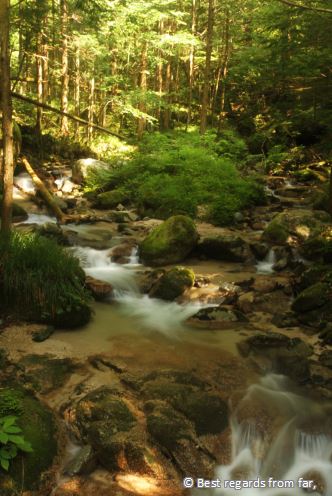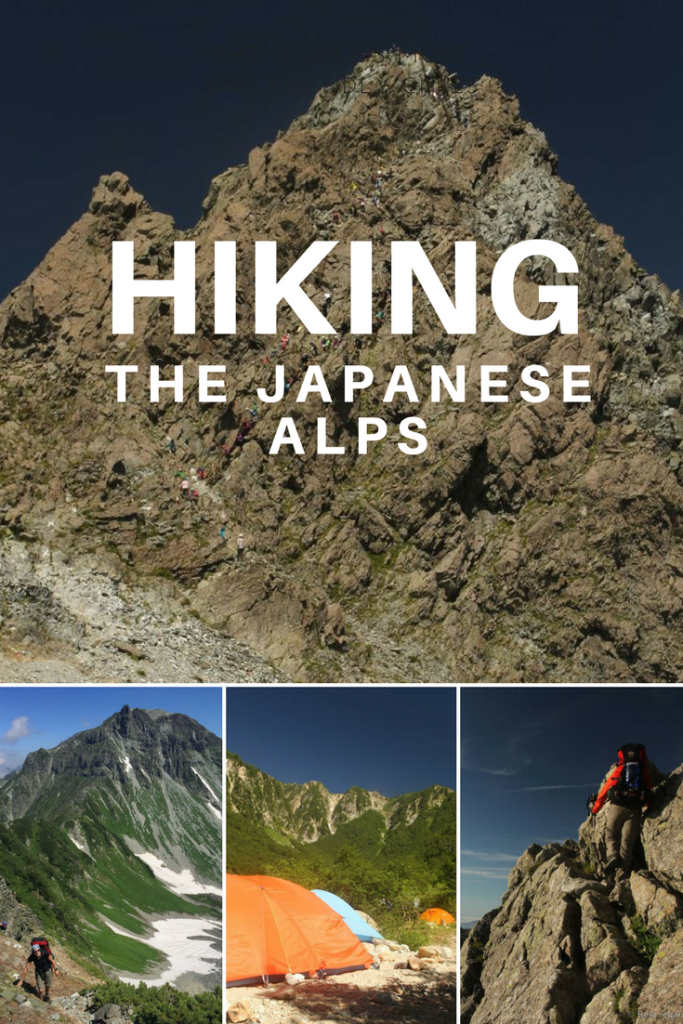Article updated on January 19, 2024
Text & photos: Claire Lessiau & Marcella van Alphen
During the Edo Period (1603 – 1868), an ancient route called the Nakasendō, literally meaning the Central Mountain Route, connected the political capital Edo (today’s Tokyo) to Kyoto, home to the Imperial Palace. Samurais and merchants used to cover its 534 kilometres through mountains and valleys. Today one can still hike the historical trail, its most atmospheric stretch being between the villages of Magome and Tsumago to explore a rare and timeless Japan.
Pin it for later!

Both Magome and Tsumago are former Japanese post towns on the Nakasendō way in the heart of the scenic Kiso Valley. Prosperous during the Edo period (1603-1868), they fell into poverty when the Chūō Main Line railway bypassed them. Thanks to the perseverance of their inhabitants who started restoration in the late 1960’s, we are strolling through the main street of Magome flanked by traditional Edo-style houses and inns. In the seventies, the government protected both villages, and used them as a model for preservation. For instance, it is one of the rare places in Japan where streets are not invaded by aerial power cables!



Leaving the cars behind by the Magome bus stop, we pass by traditional souvenir shops, restaurants, and food stalls. The steep cobble-stoned street leaves the 43rd post town or juku from Tokyo out of 69 on what used to be both literally and figuratively the high way. Japanese tourists queue to taste the local delicacy, the gohei-mochi (五平餅): pounded white rice shaped as a lump, skewered on a wooden stick, coated with a sweet miso sauce with nuts and grilled on an open fire. This calorie bomb was precious for travellers of the Edo Period, and is very welcomed today to complete the whole hike!



The trail wanders through beautiful centennial cypress forests, along rivers and by waterfalls. Looking up at these tall trunks of the hinoki cypress trees that stretch high into the forest canopy, we realise that this specific and highly protected industry is the main reason for the excellent state of preservation of this section of the Nakasendō trail. Historically, the Kiso Valley has supplied the fragrant timber used to rebuild one of the holiest Shinto shrines of Japan: the Grand Shrines of Ise. The labour had to be performed every 20 years. During the Edo Period, to ensure a proper supply of timber, five species of trees were protected by law (hikoki and the relatively similar other cypress trees: sawara, nezuko and asunaro, as well as the Japanese umbrella pine, the koyamaki). Disobedience costed an arm for a branch or a head for a tree… Logging was forbidden for the locals’ own use, keeping them in a relative poverty and preserving the pristine forest which today look amazing during Autumn.




On the side of the trail, hidden amongst the trees, some weathered jizō (small bodhisattva statues) stand to guard travellers like us. Past half-way, we rest at a tea house. We feel like we are traveling back in time, enjoying a tea warmed up above an open fire in the restored rest-house. Getting closer to Tsumago, the 42nd post town on the highway, rice fields slowly replace forests.



While Magome can be busy with tourists, Tsumago is more peaceful and authentic, even though its long main street is bordered by souvenir shops. Tsumago has been preserved from major fires and railroads and evokes a traditional village of the late Edo Period. The busy post town was a well-known stop on the Nakasendō way for simple traders staying in family guesthouses, and for daimyo (feudal lords) and tax collectors who made the trip regularly. High ranking government officials would stay at the Honjin in lavish rooms, resting in its peaceful gardens, or the Waki-honjin should the first one be fully booked. Both have been converted into museums: the Honjin was reconstructed to its 1830’s state while the original 1877 cypress building of the Waki-Honjin, where the emperor Meiji had tea during one of his trips in 1880 still stands. As do the specially made toilets for the emperor’s only usage that still have not been used to this day!



The historical houses with the pristine forested mountains in the back drop offer a fantastic setting, that can be checked about one kilometre (0.6 miles) north of Tsumago from the former castle grounds. It is not surprising that these streets are often used to shoot historical movies as places such as Magome and Tsumago hardly exist anymore in Japan and are the most well-preserved post towns in all of the country.
Travel tips:
- Matsumoto is a good place to organize this hike from. It is also easy to get to this hike from Nagoya or Kyoto by train.
- It is best to walk from the touristy Magome to the more authentic Tsumago. It is also better for the altitude (320 metres up and 430 metres down that way). It is an easy hike and no specific footwear is required.
- From Matsumoto, we used our JR train passes to ride the train to Nakatsugawa, and then a bus to Magome. Before you hop on, ask for the time tables of the return bus (Tsumago) at the tourist office, by the bus stop. Bus tickets can be bought onboard.
- Once in Tsumago, a bus took us back to Nagiso train station (that is a couple of kilometres away and easily walkable too).
- The trail is well marked in English.
- The Nakasendo trail can be hiked all the way (plan for about 12 days) and is relatively easy.
- Check out this interactive map for the specific details to help you plan your trip and more articles (zoom out) about the area!
Like it? Pin it!

For everything about Japan, click here!
Or click on the images below for a selection:












BEAUTIFUL!
It is indeed a great setting. Thank you Bernard!
Thank you for your introducing my country with beautiful pictures and proper information.
I feel I want to visit Tsumago and Magome.
And it’s fun to read about Paris!
Hi! Happy you enjoy reading our articles about your beautiful country and thanks for the comment! We had such a wonderful time there and Tsumago and Magome are so peaceful. Feel free to share our website among other people you think might be interested. 😄 there will be more about Paris and Japan in the coming weeks and then we will travel to Mexico, Belize, Guatemala, Nicaragua , El Salvador, Honduras, Costa Rica and Panama. So a lot more to come ☺️
Beautiful photographs. What a wonderful place.
Thank you very much!
Hiking in Japan is on my list. COVID got in the way! Will come back for details when I start planning again.
Do not hesitate! We have some more write ups to do about hiking in Japan, including the 88-temple pilgrimage. Feel free to folow us to get notified. Hope you get to go soon!